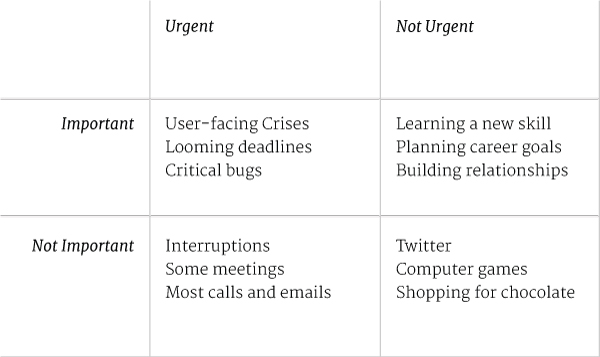I know for me, as I got more comfortable as a UX designer (and more in demand), I began to struggle to manage my time. Having one feature to focus on was one thing, but balancing two or juggling as many as six at one (crazy) time demanded developing a whole new set of time management techniques. Now that I am also a consultant and completely have control of my own time—it’s a time management master class, and let’s just say I’m not always passing. 😉 Here are some techniques that have often helped me.
1) The Pomodoro Technique
The Pomodoro technique divides time in 25 minute chunks. You pick a specific task, and work on it without paying attention to interruptions for whole “pomodoro” or 25 minute chunk. You set a lovely tomato timer, seen here, to the magic number, and when it goes off you stop. You take a 5 minute break. Do office yoga, get a drink or a snack, or clean your desk for a few minutes. Rest. My favorite part of trying this technique is that it keeps my blood moving and reminds me to get up periodically, although I do have trouble remembering to set the timer in the first place.
After 4 pomodoros, you take a longer half hour break. Eat lunch, run an errand. Rest and assimilate. Then back to 4 more! Here’s a more detailed breakdown of
I am by no means a master, but this technique seems to work gangbusters for some people. Find out more detailed training and info at: pomodorotechnique.com
2) The Simple Top 3 To-Do List
There’s an often-told story that Ivy Lee, the father of public relations, sold this technique to steel tycoon Charles M. Schwab for $25,000. I’ll spare you that, though, and jump straight to how to do it:
- Make a list of the top things you have to do that day, numbered in order of priority
- I heard only write the top 3 but I have heard others say 6 or all for that day. Only writing 3, however, is what I think makes this so successful for me. Three feels attainable, and I still feel pretty good if I just get to 2. Plus it forces me to choose what’s really important
- Start with the first one
- Only move on to #2 when #1 is done
- If it doesn’t get done, move it to tomorrow’s list.
Simple… but effective.
3) Urgent versus Important
I first learned about this technique via Steven Covey’s Seven Habits of Highly Effective People, but 99u recently featured this as the Eisenhower Matrix.
The basic idea is this. There are urgent tasks and important tasks. Some are both urgent and important, some are neither.
Many people get caught up doing only urgent, but not necessarily important tasks. Here’s some examples:

However, the things you need to really grow, improve, and be successful are very important but not urgent. Such as learning about time management (heh), making a personal website when you’re not looking for a job yet, or learning a new in-demand skill.
The key action to take based on this is: make time for the important but not urgent tasks. If you don’t set aside time to do them, they won’t happen. Also, ignoring them tends to create more and more urgent tasks, leading to a cycle of “fire-fighting” and endless living in urgent mode.
You have to get ahead of it. Work on that company style guide or interface guideline. Take time to interview a user with no deadline looming. Talk to a colleague about your company’s long-term goals or your personal career ones. Whatever falls into that quadrant for you, make time for it. You’ll be glad you did.




Trackbacks/Pingbacks